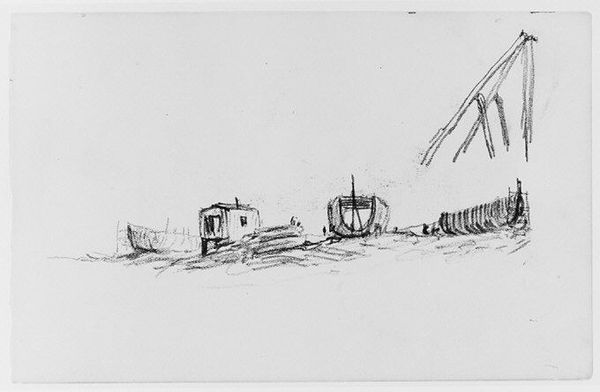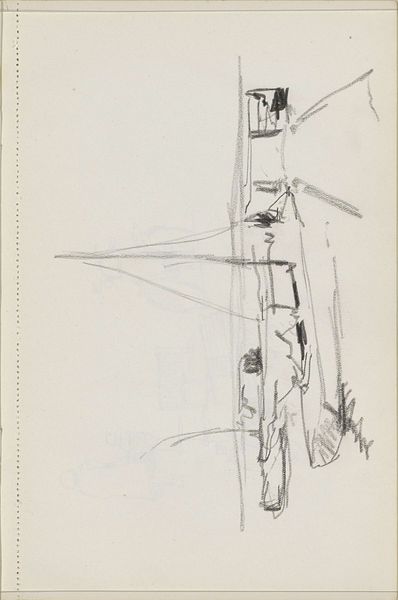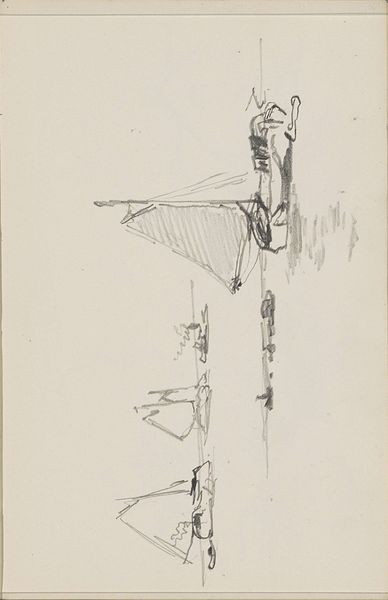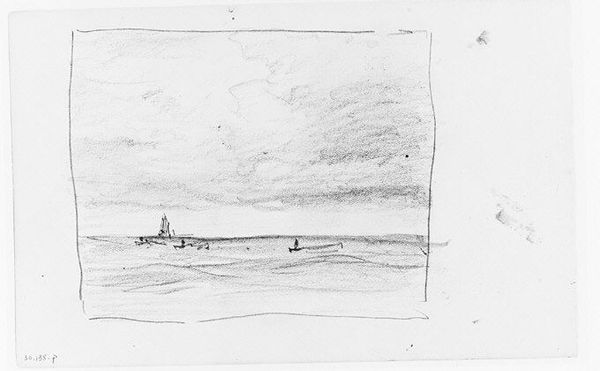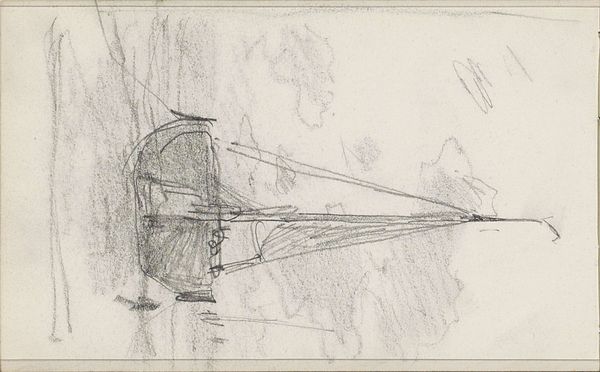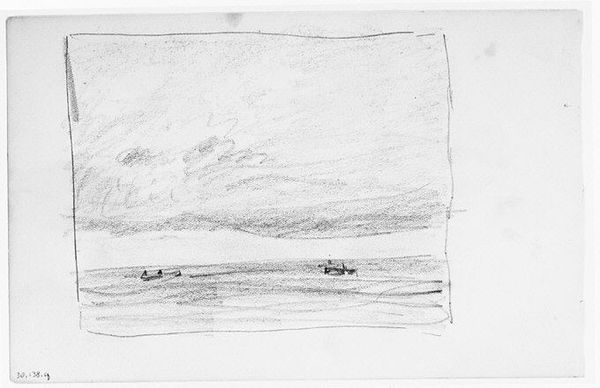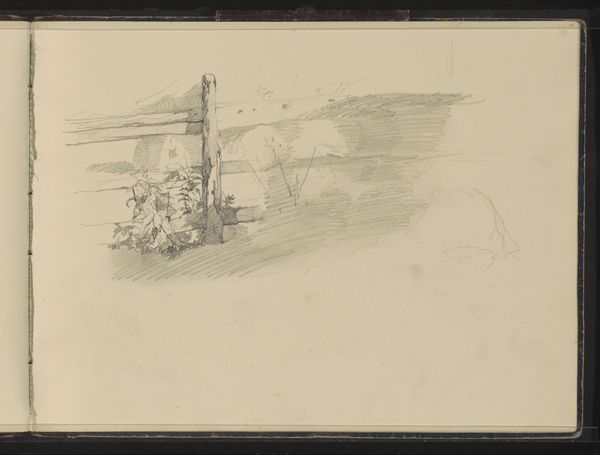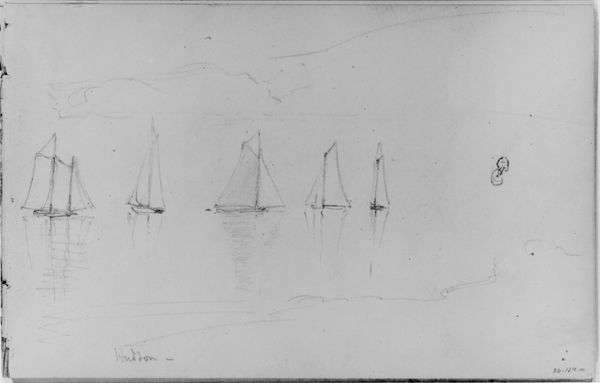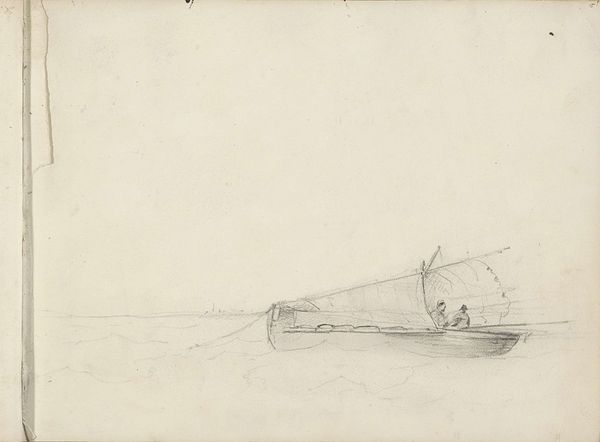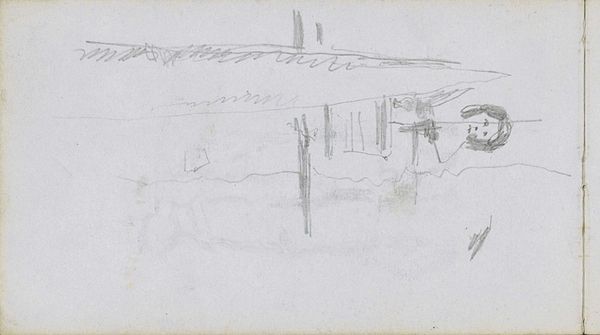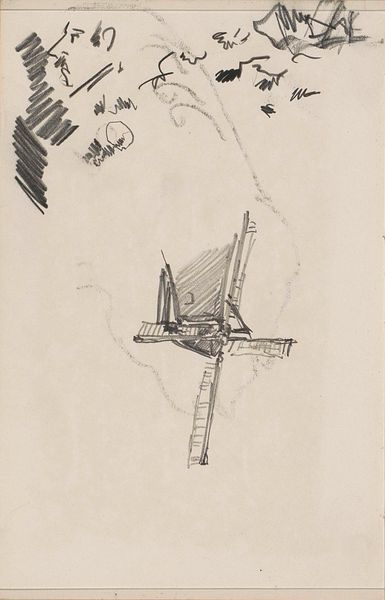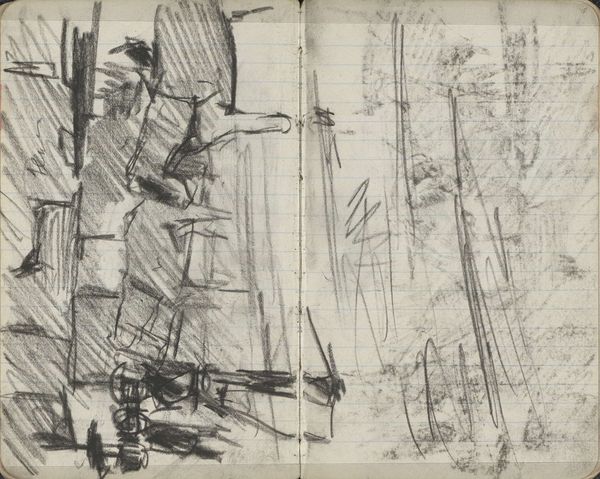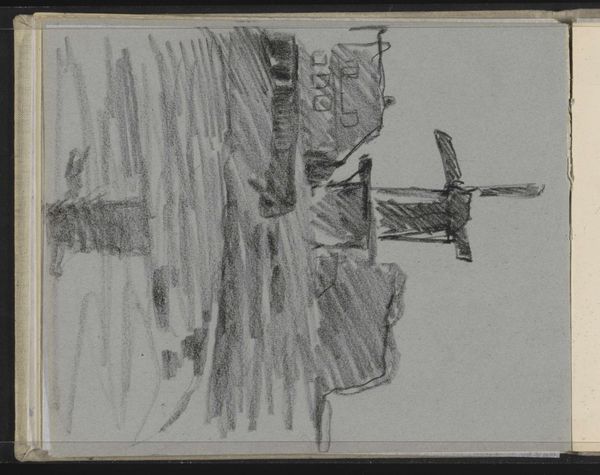
drawing, paper, pencil
#
drawing
#
pencil sketch
#
landscape
#
paper
#
sketch
#
pencil
#
genre-painting
Dimensions: Sheet: 4 7/8 x 7 7/8 in. (12.4 x 20 cm)
Copyright: Public Domain
Editor: This pencil sketch by Henry Ward Ranger, titled "Study: Shipyard," is simply fascinating. It's rendered on paper, presumably sometime between 1858 and 1916. The light touch of the pencil gives it a very ephemeral quality. How do you interpret the visual dynamics at play here? Curator: Observe the varying line weights. The artist uses thicker lines to define the primary forms—the skeletal structure of the ship, the mechanical crane—thereby creating a visual hierarchy. This is contrasted with the lighter, almost gestural lines that suggest the surrounding environment and secondary elements. This deliberate control of line not only establishes spatial relationships but also emphasizes the industrial nature of the scene, juxtaposing organic forms with the rigid geometry of machinery. Note the spatial organization. The artist presents multiple perspectives and vantage points on a single plane. It's a fragmented but harmonious study, using these discrete, juxtaposed elements, almost as units in a visual equation. Editor: That’s a compelling point about the contrast between the organic and geometric. It seems Ranger is less interested in photorealistic depiction and more focused on the essential forms. Curator: Precisely. Focus on Ranger’s reductive approach. The details are deliberately omitted, resulting in an abstracted depiction of reality. This reductive technique invites the viewer to actively participate in constructing the image. Does this economy of line suggest anything about the artist’s intention or perspective? Editor: Perhaps the artist wanted to distill the scene to its core elements and capture its transient essence through his rapid execution and careful selection of subject matter? Curator: It highlights how an ostensibly incomplete or preliminary work can, in itself, be a powerful artistic statement about perception, form, and the intrinsic beauty found within industrial landscapes. Thank you, I feel that the composition and its structure have revealed an intentional language.
Comments
No comments
Be the first to comment and join the conversation on the ultimate creative platform.
